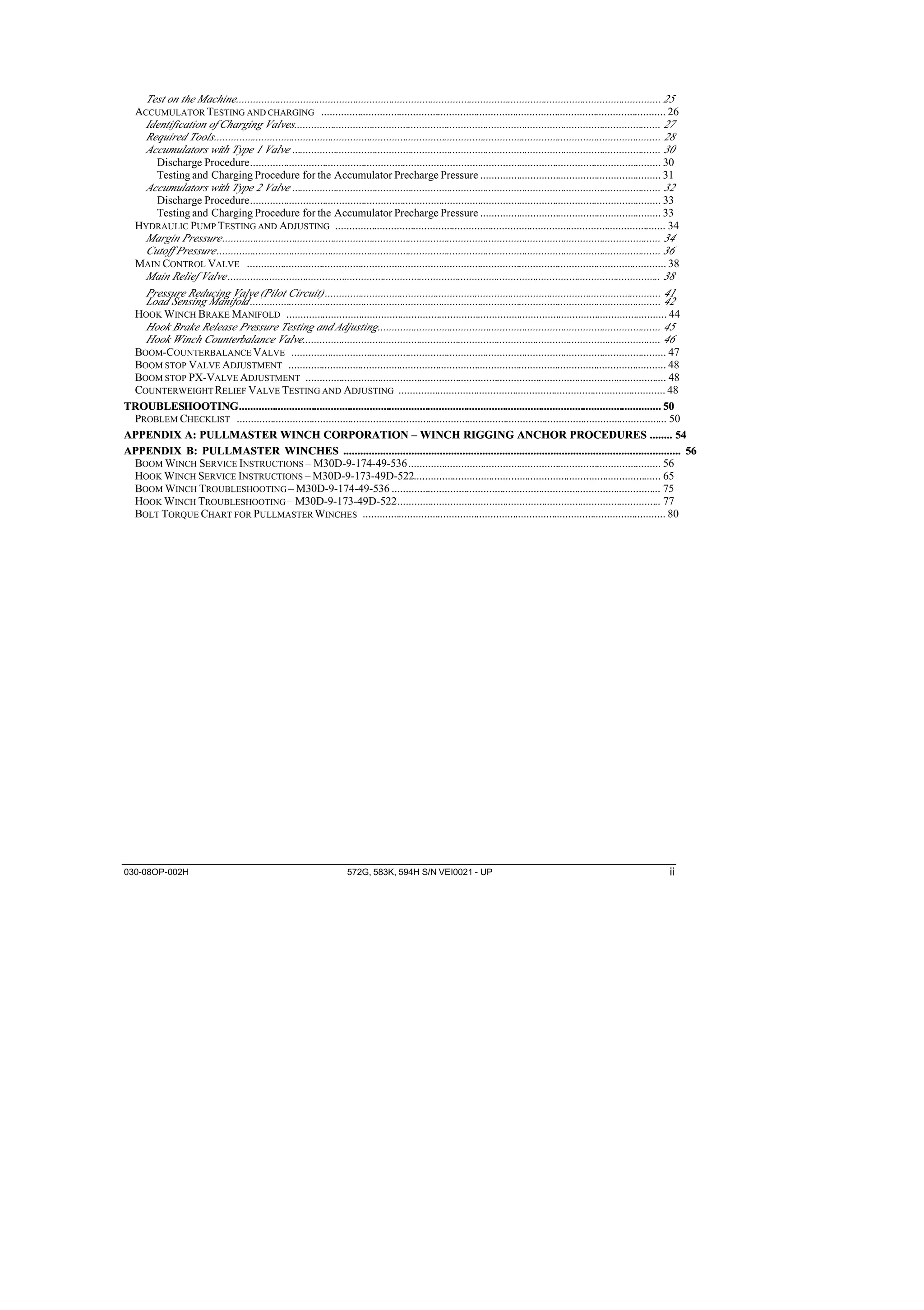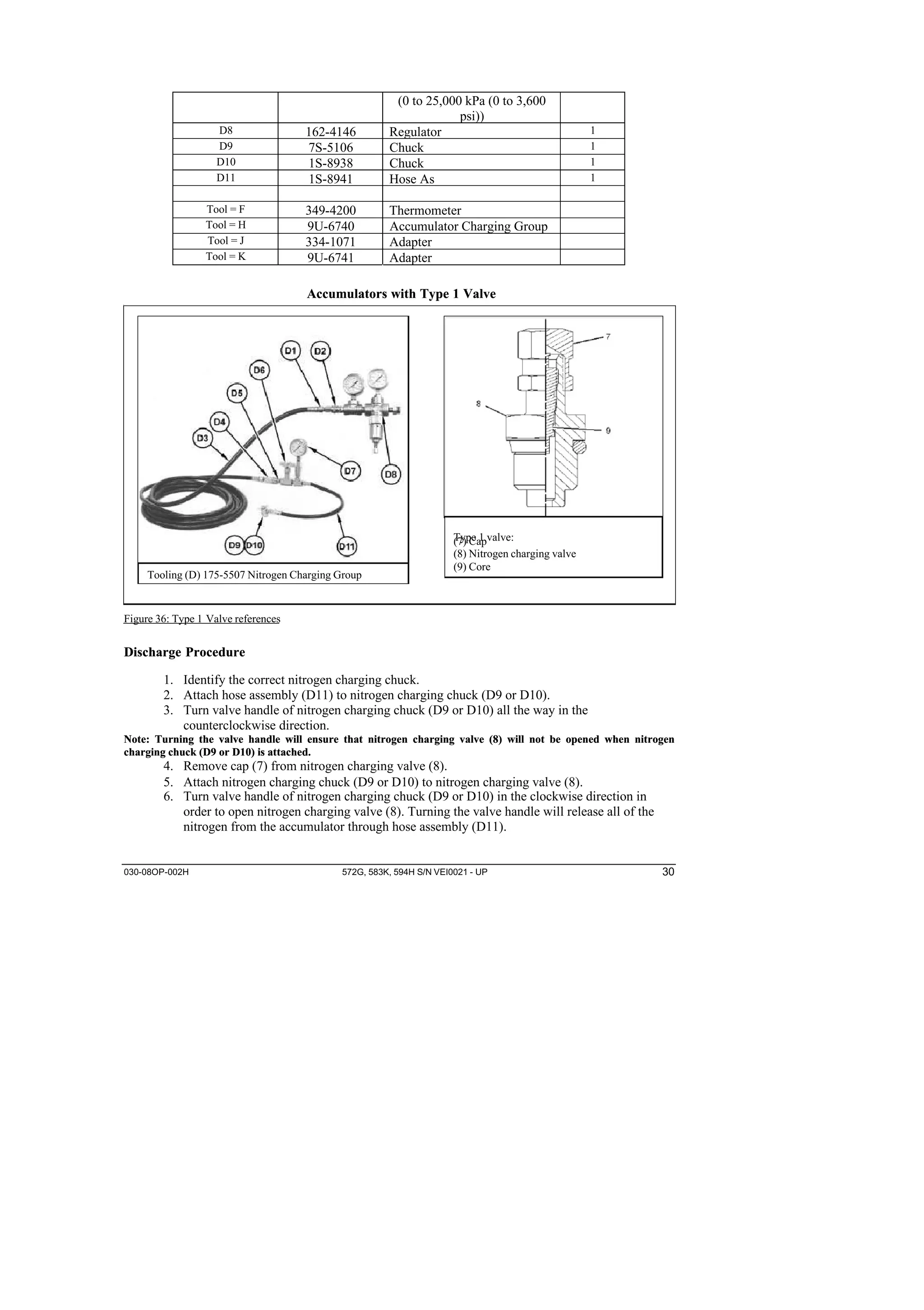This document provides operation, maintenance and safety information for Vanguard Equipment Inc. pipelayers models 572E/F/G, 583H/K and 594G/H. It includes sections on machine description and components, controls, maintenance procedures, lubrication specifications, and testing procedures for the hydraulic system. Safety topics covered include warning signs, general hazards, parking, and high hydraulic pressure.



















































































